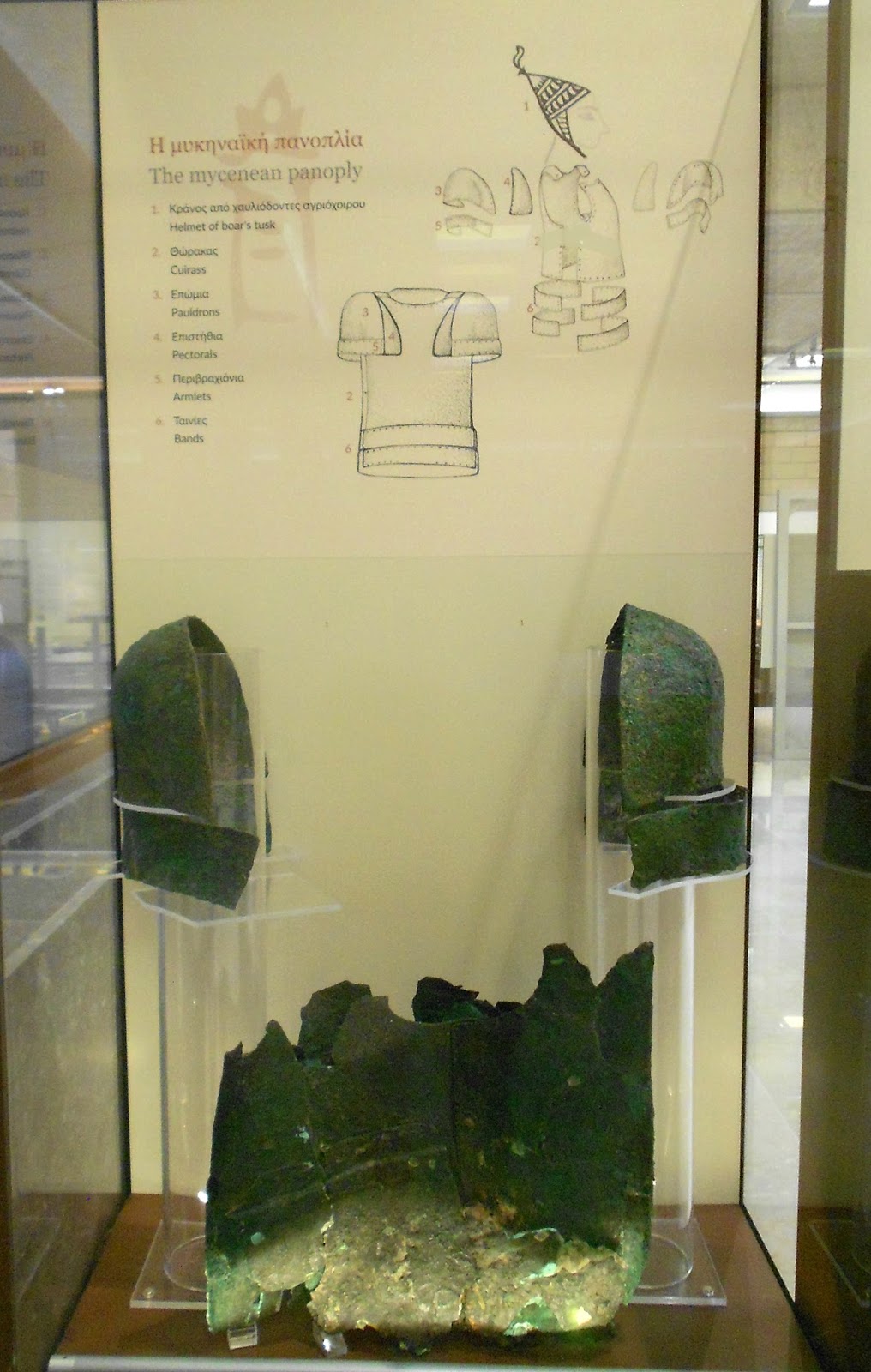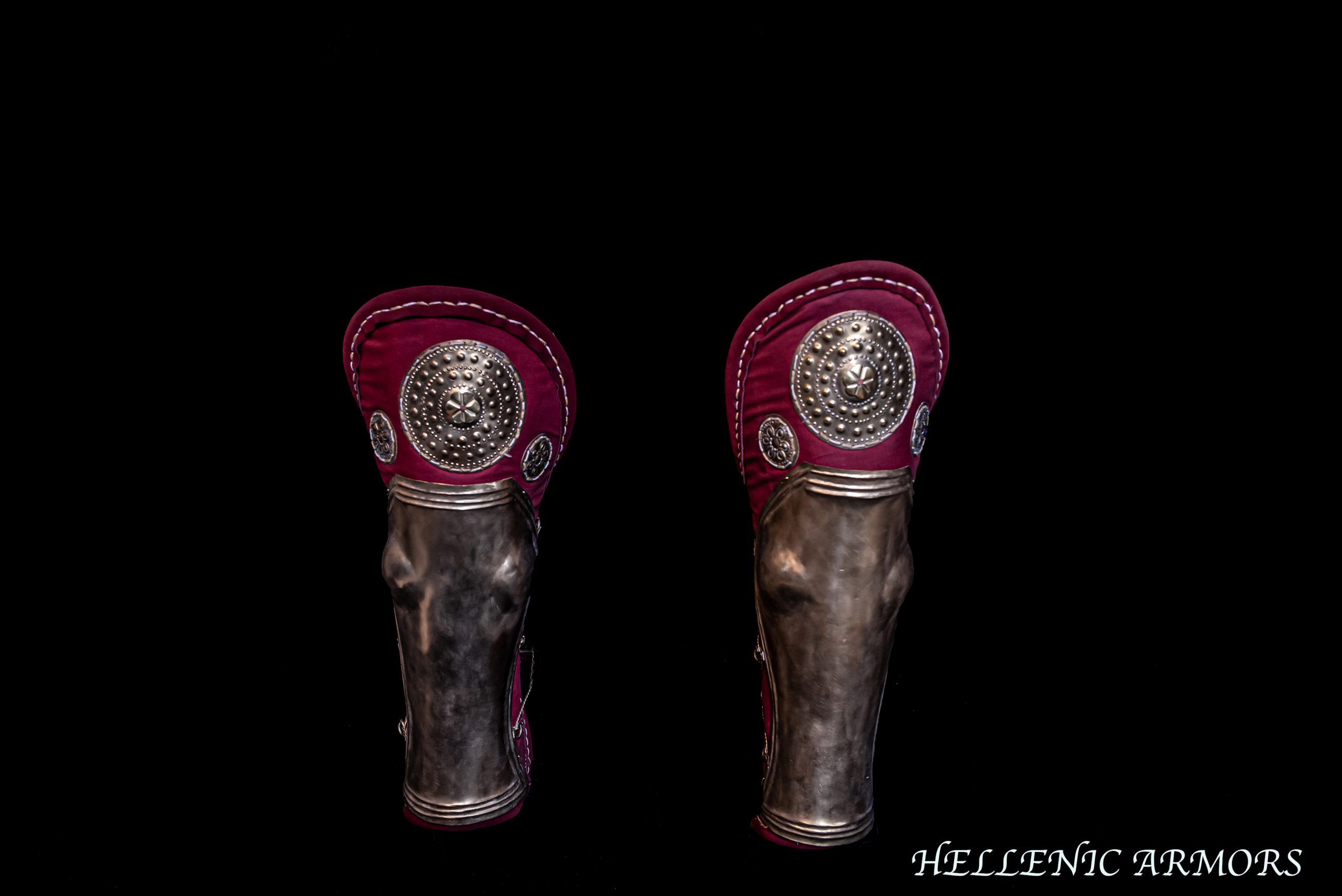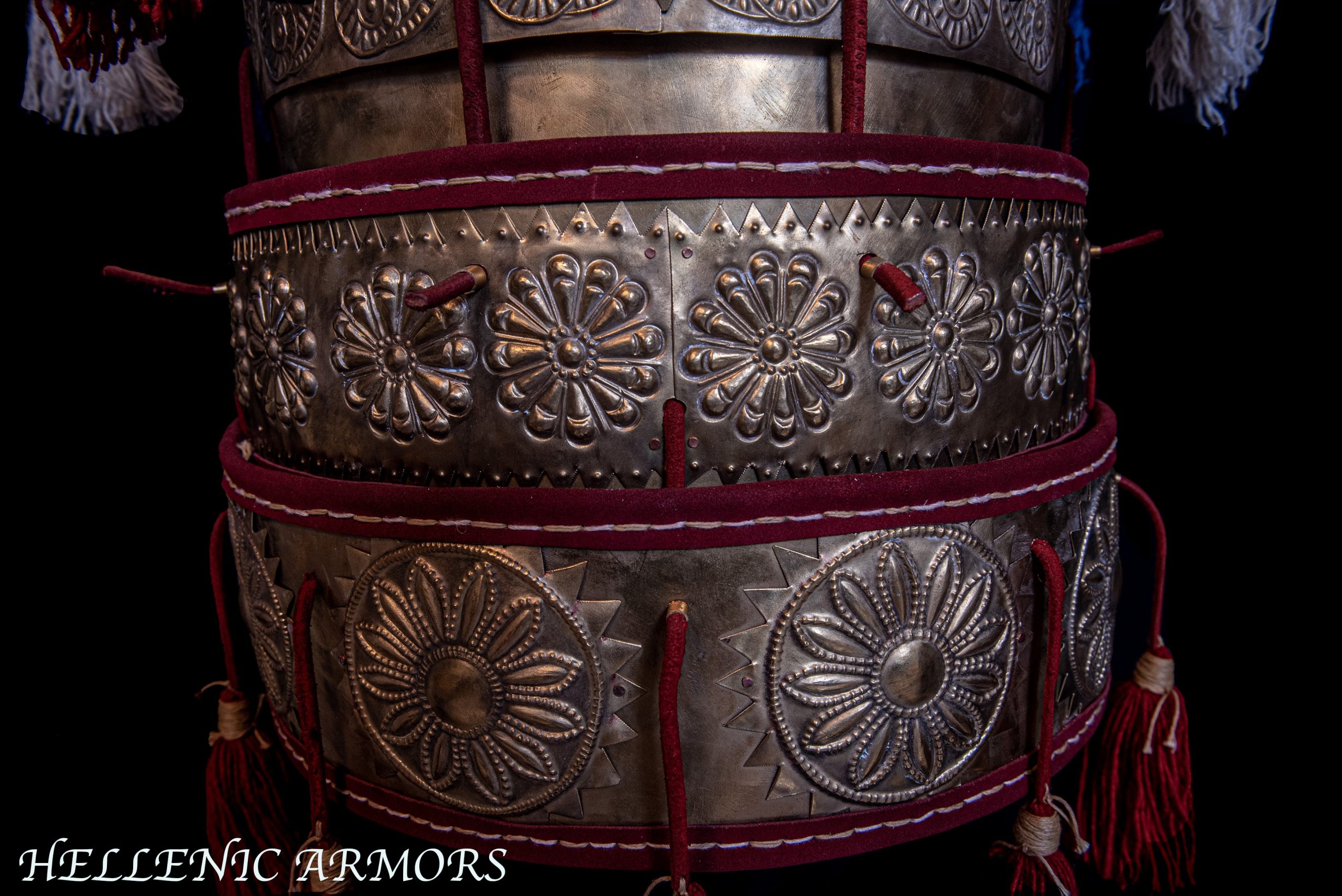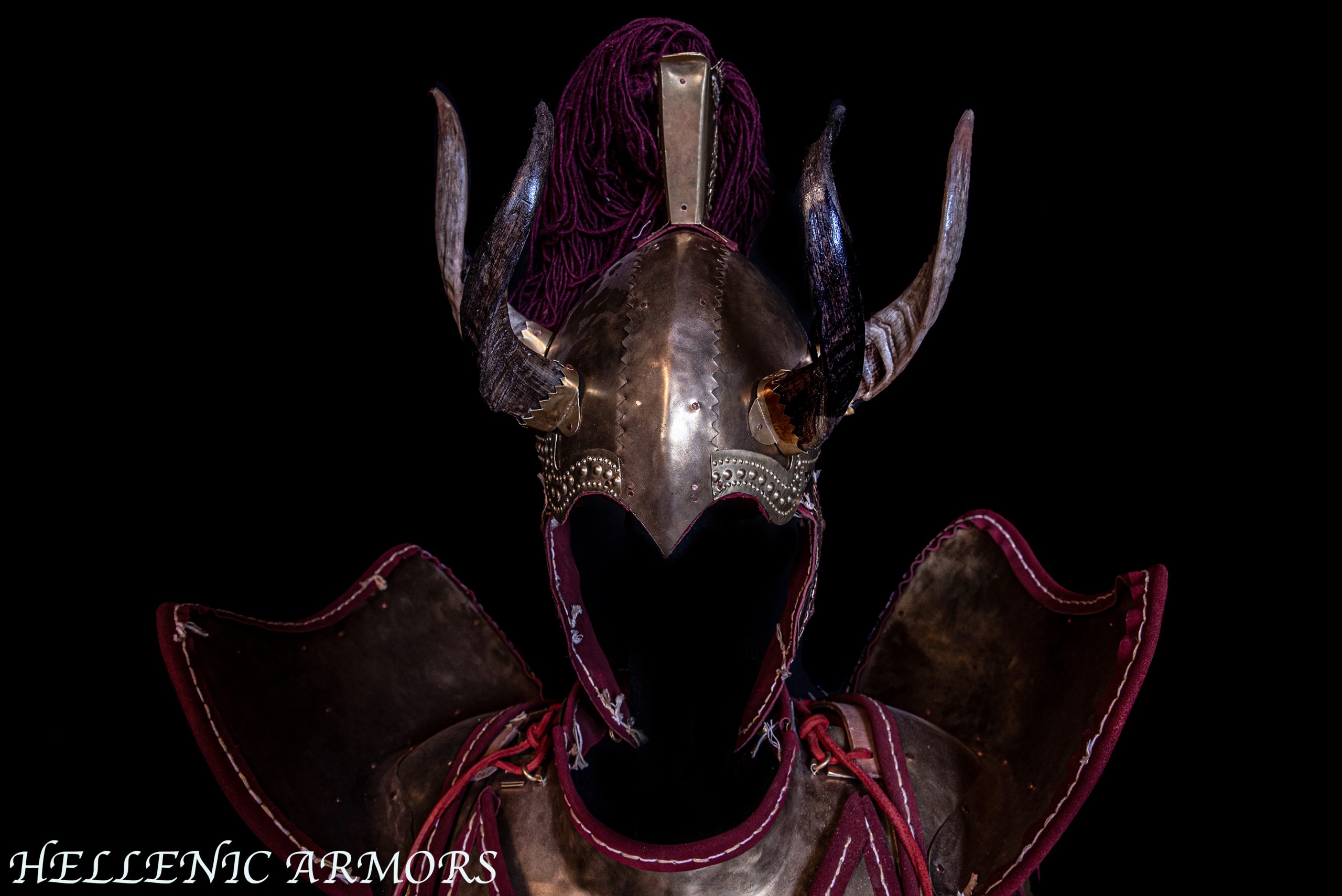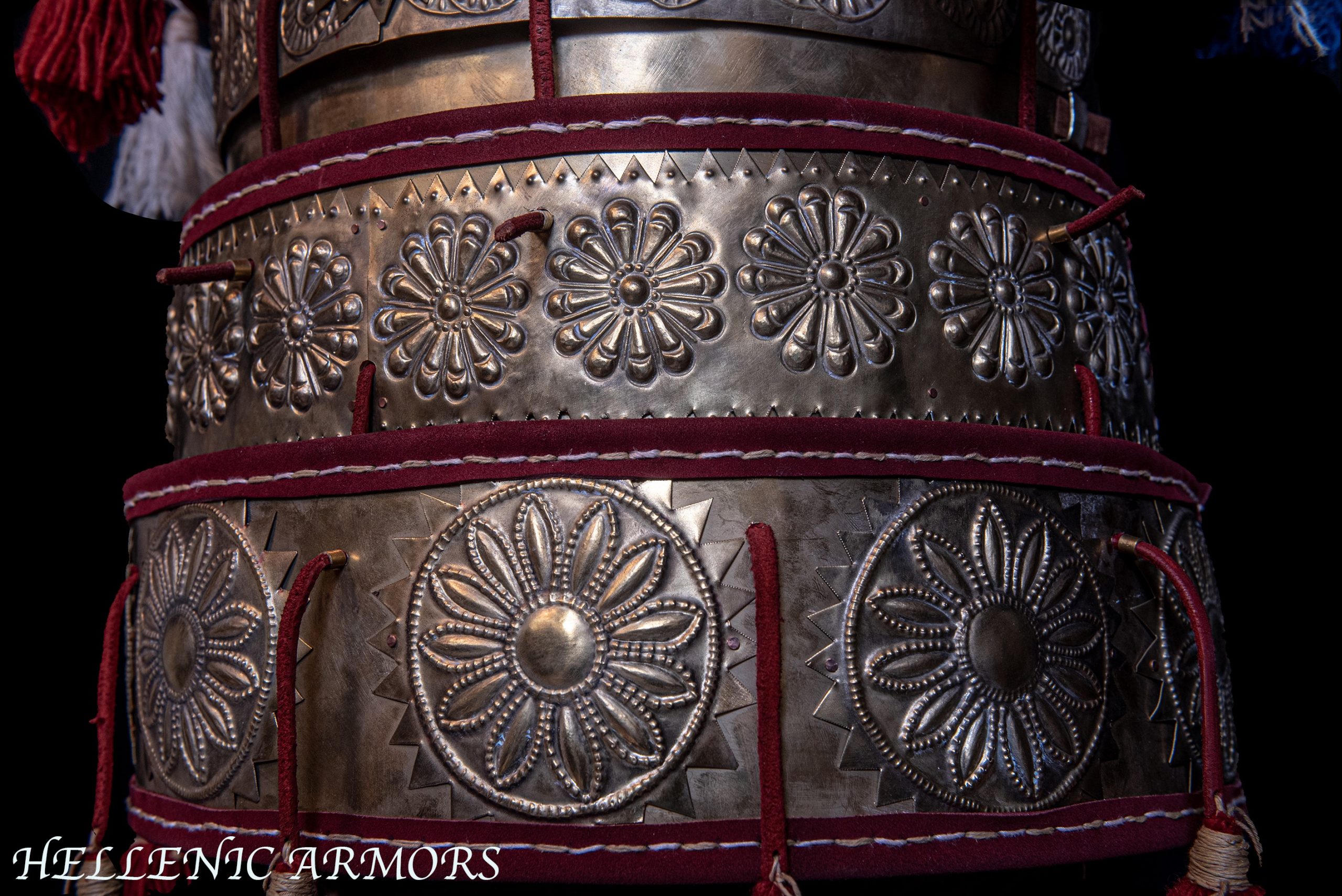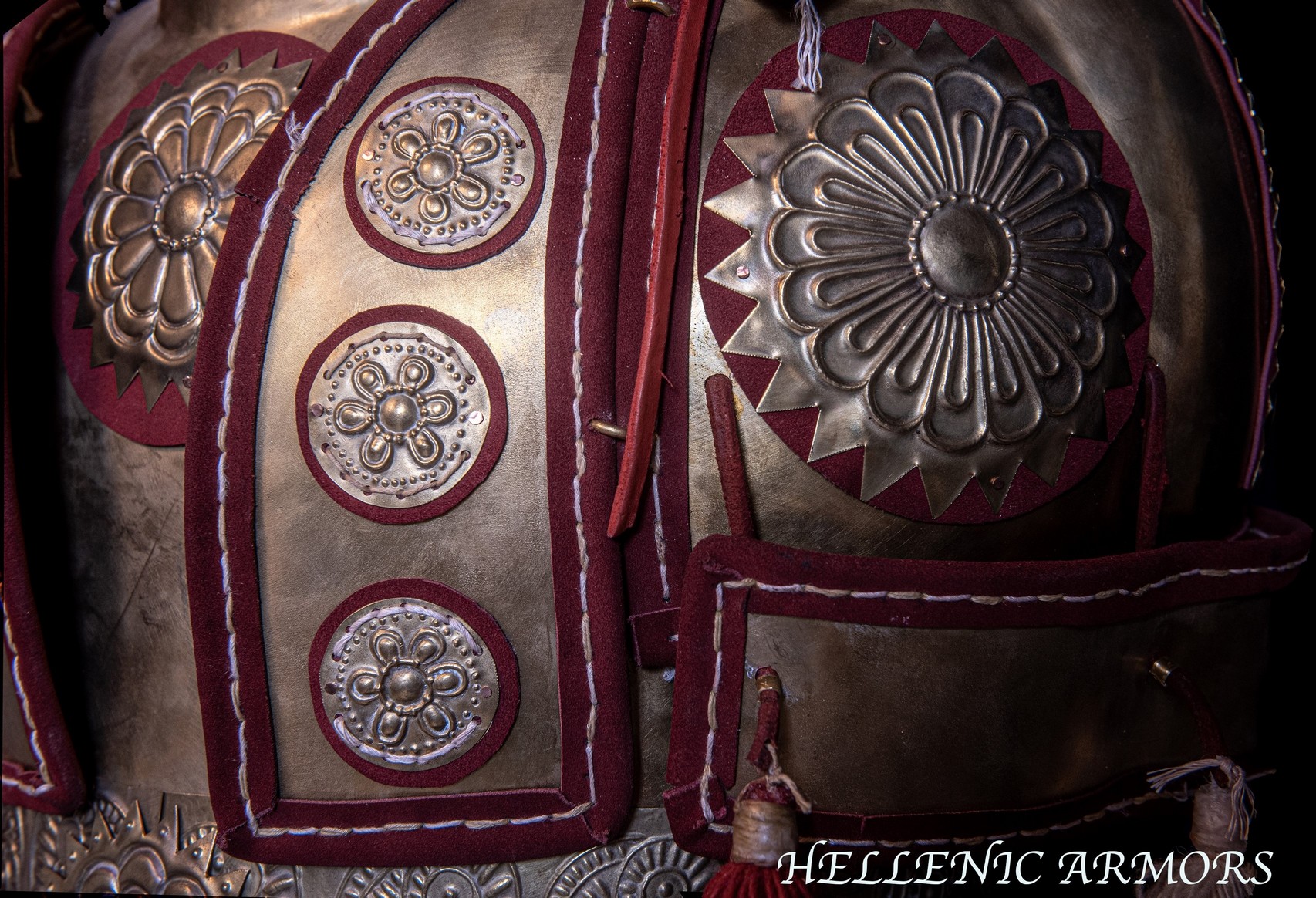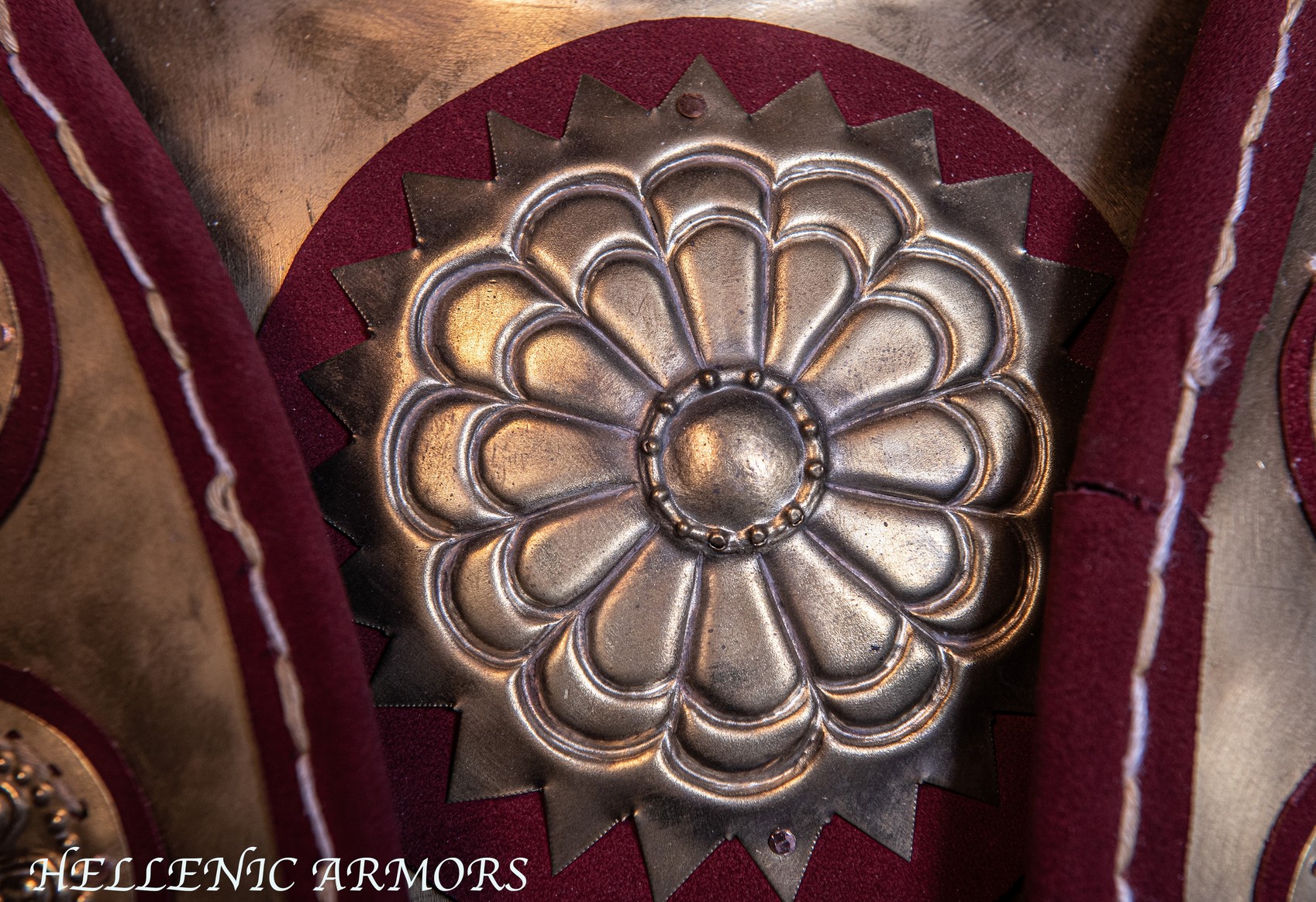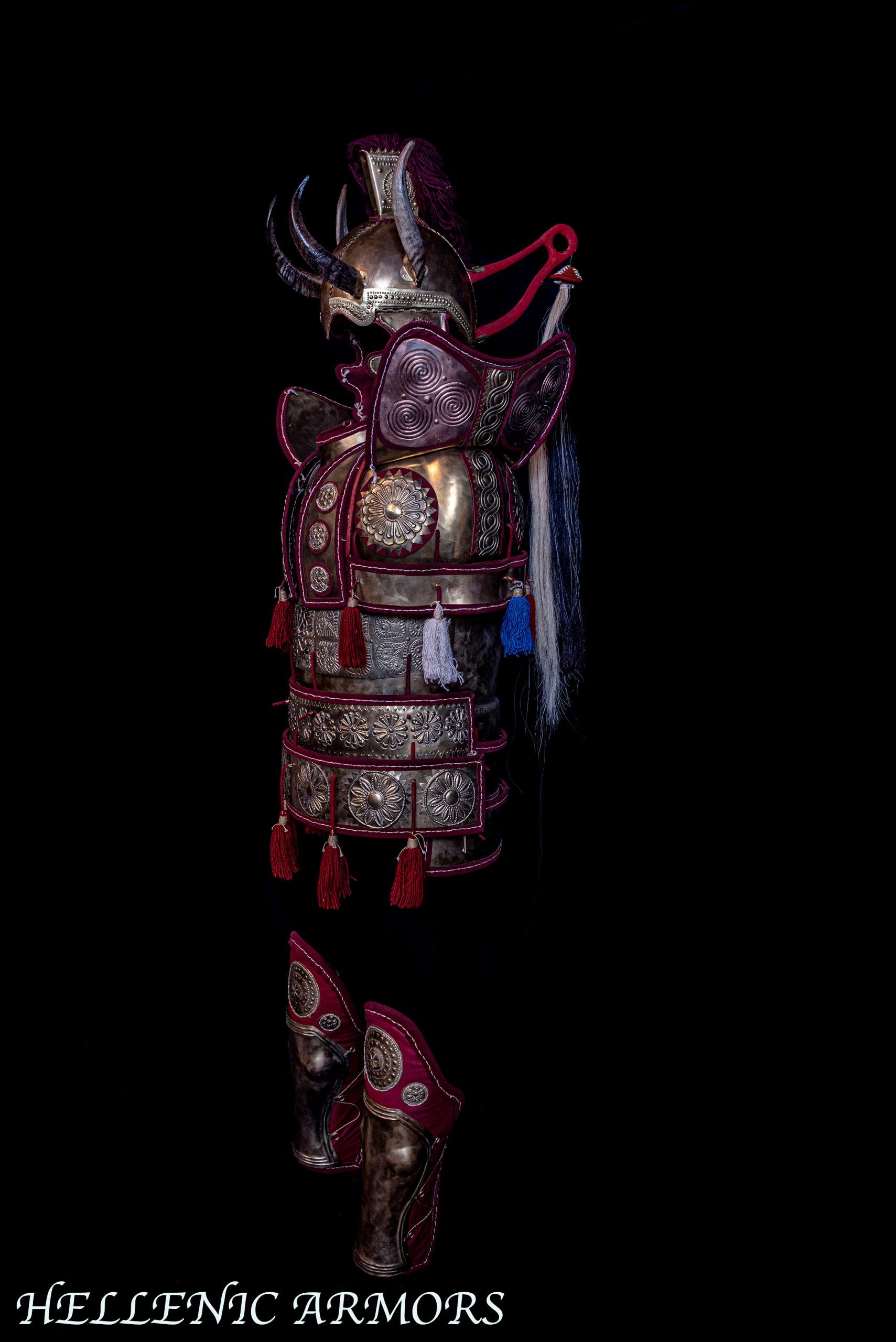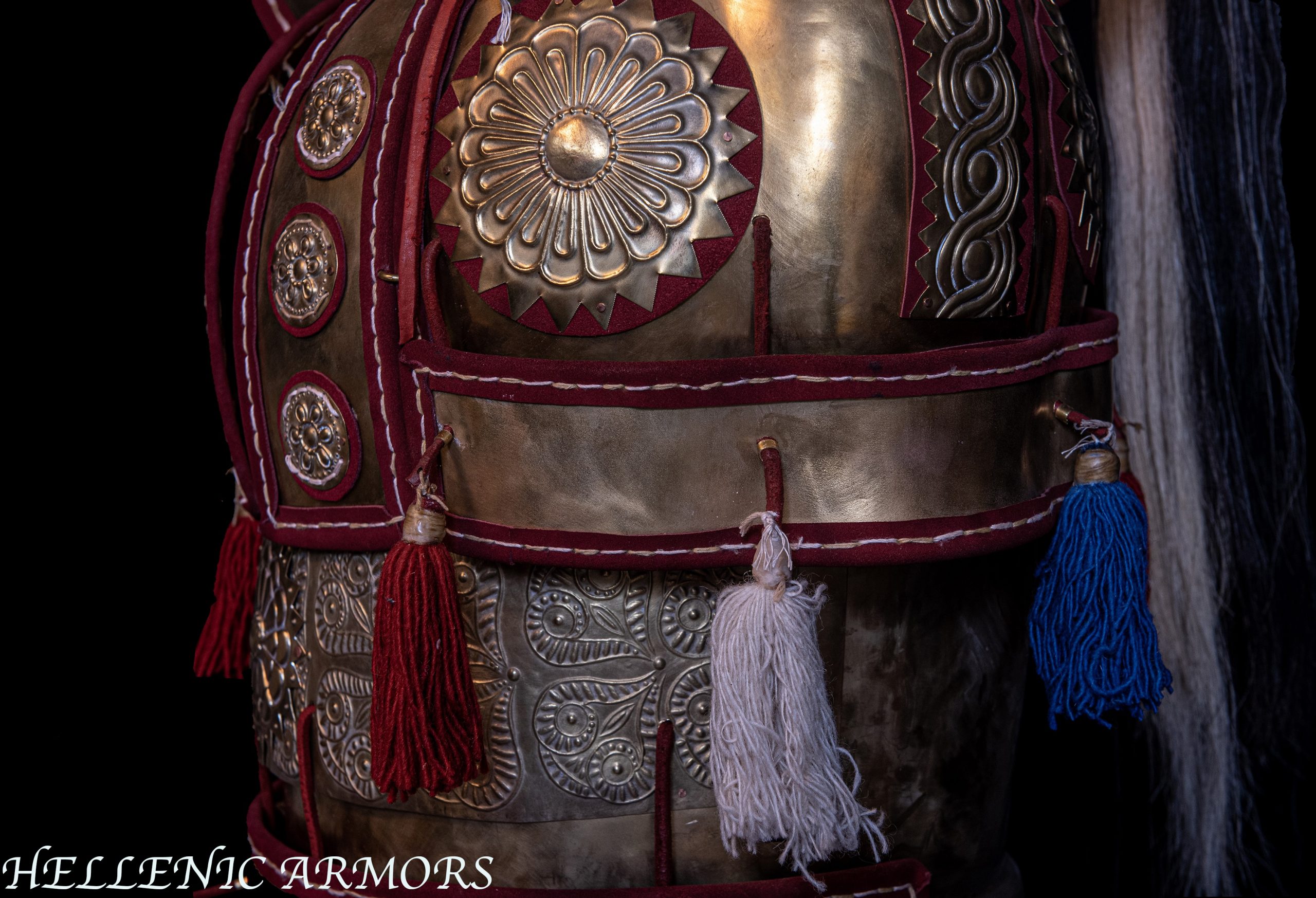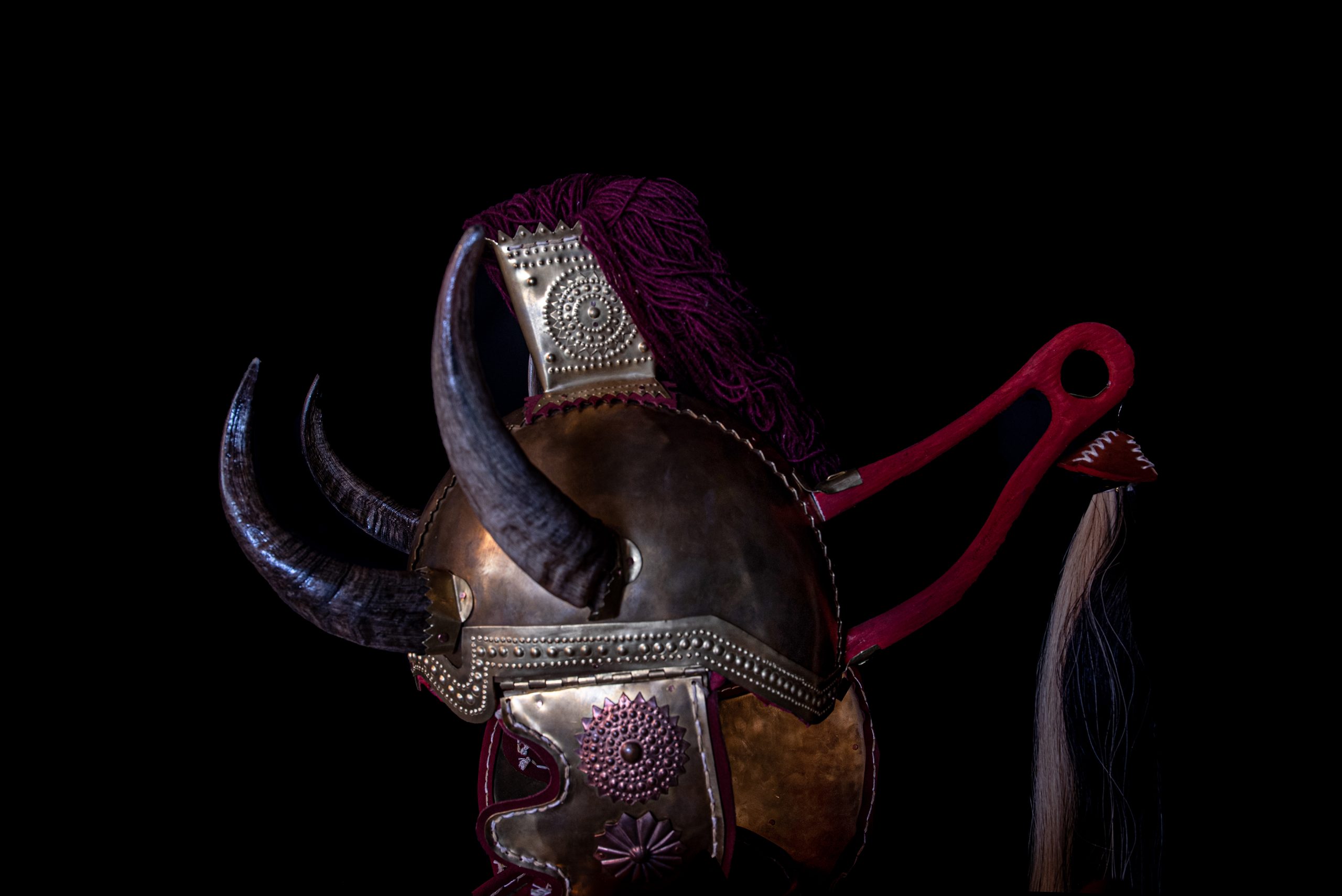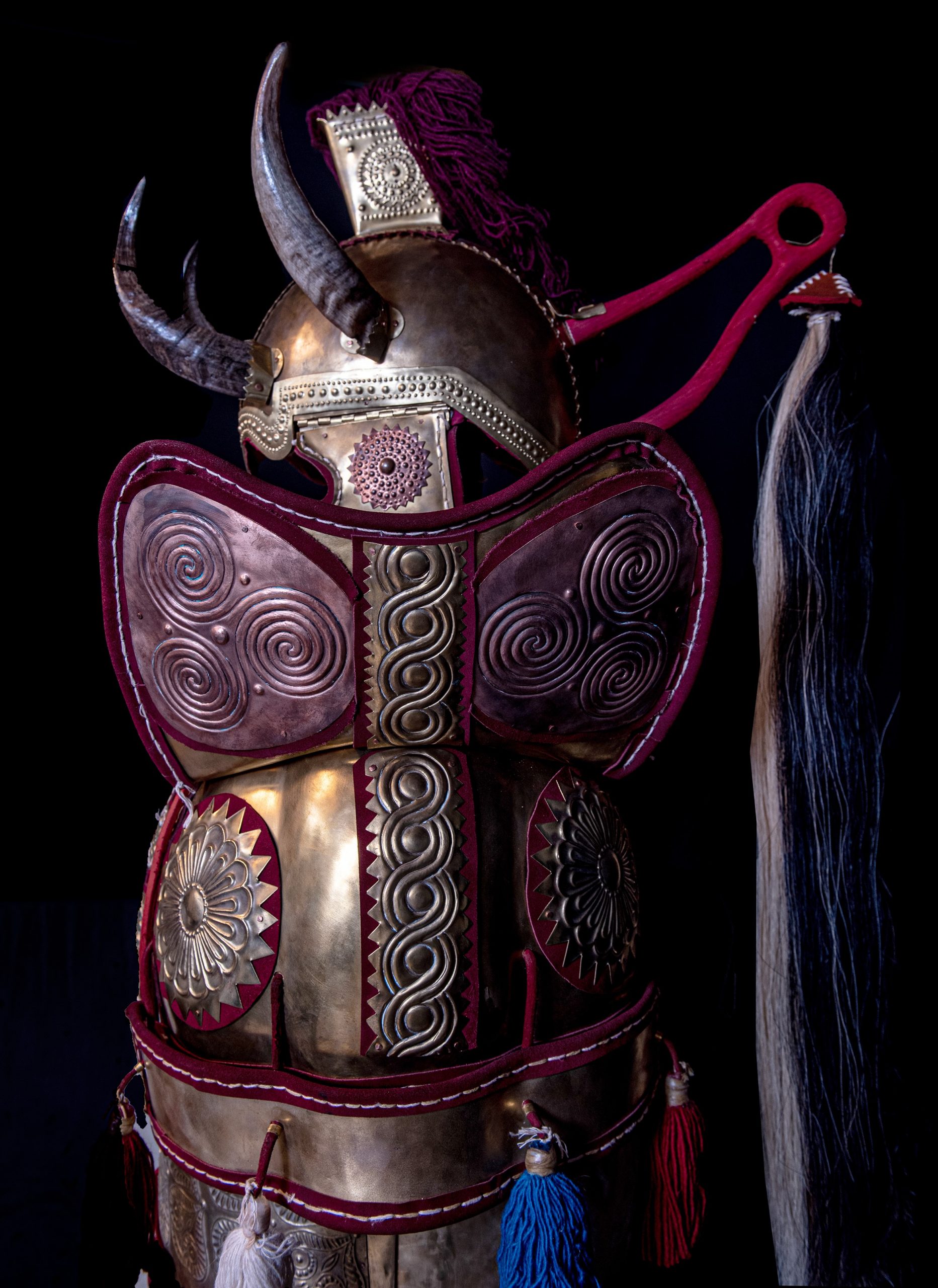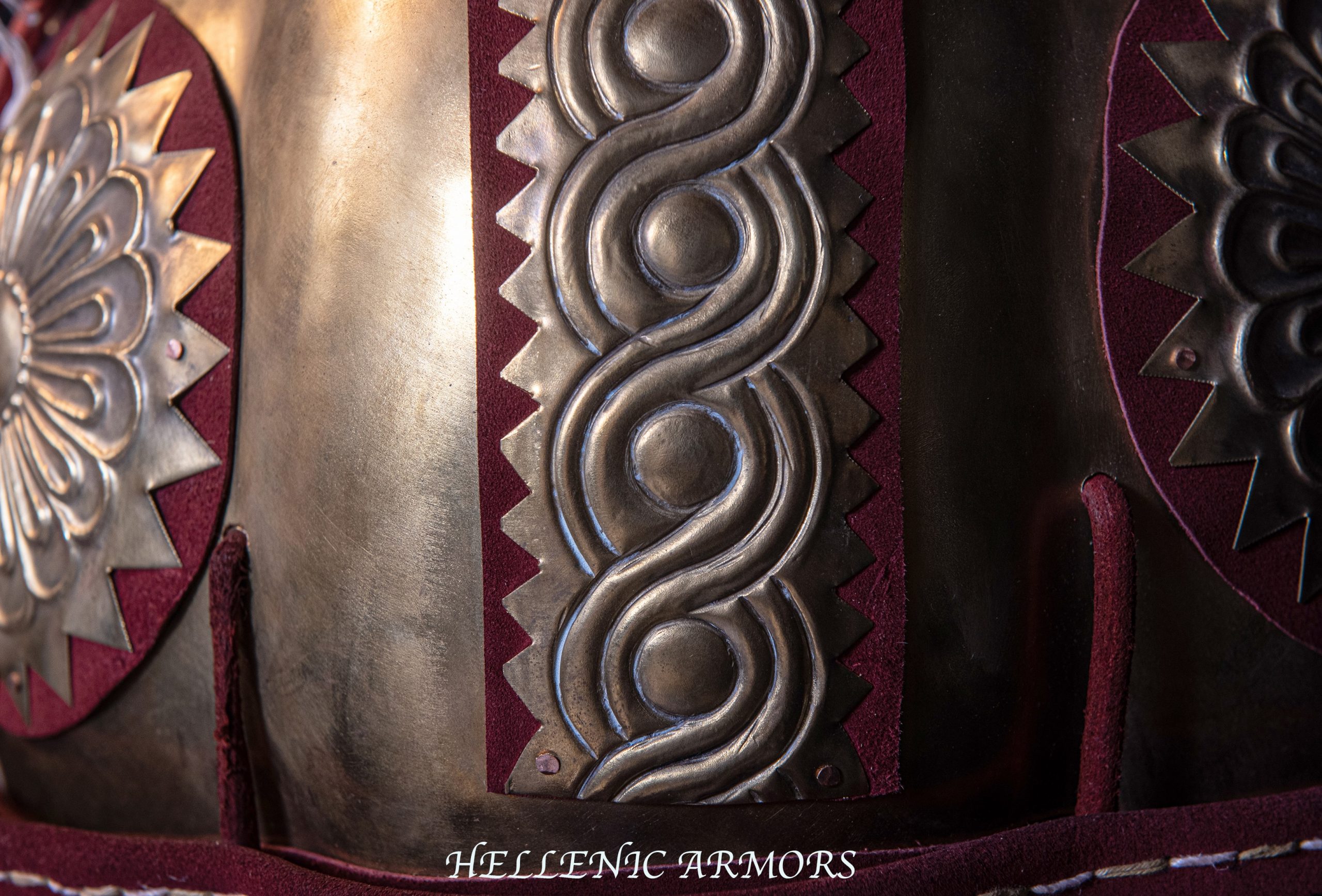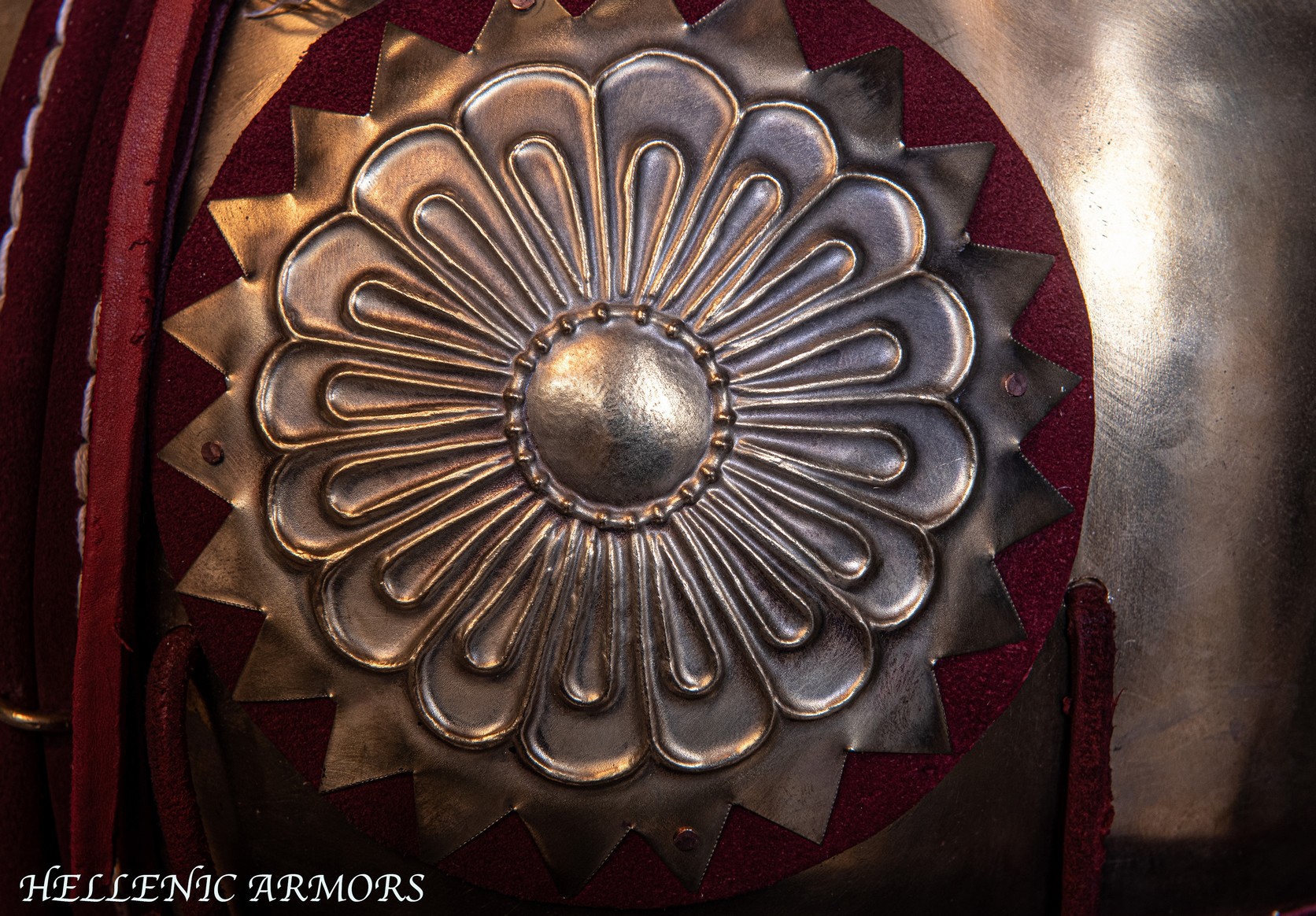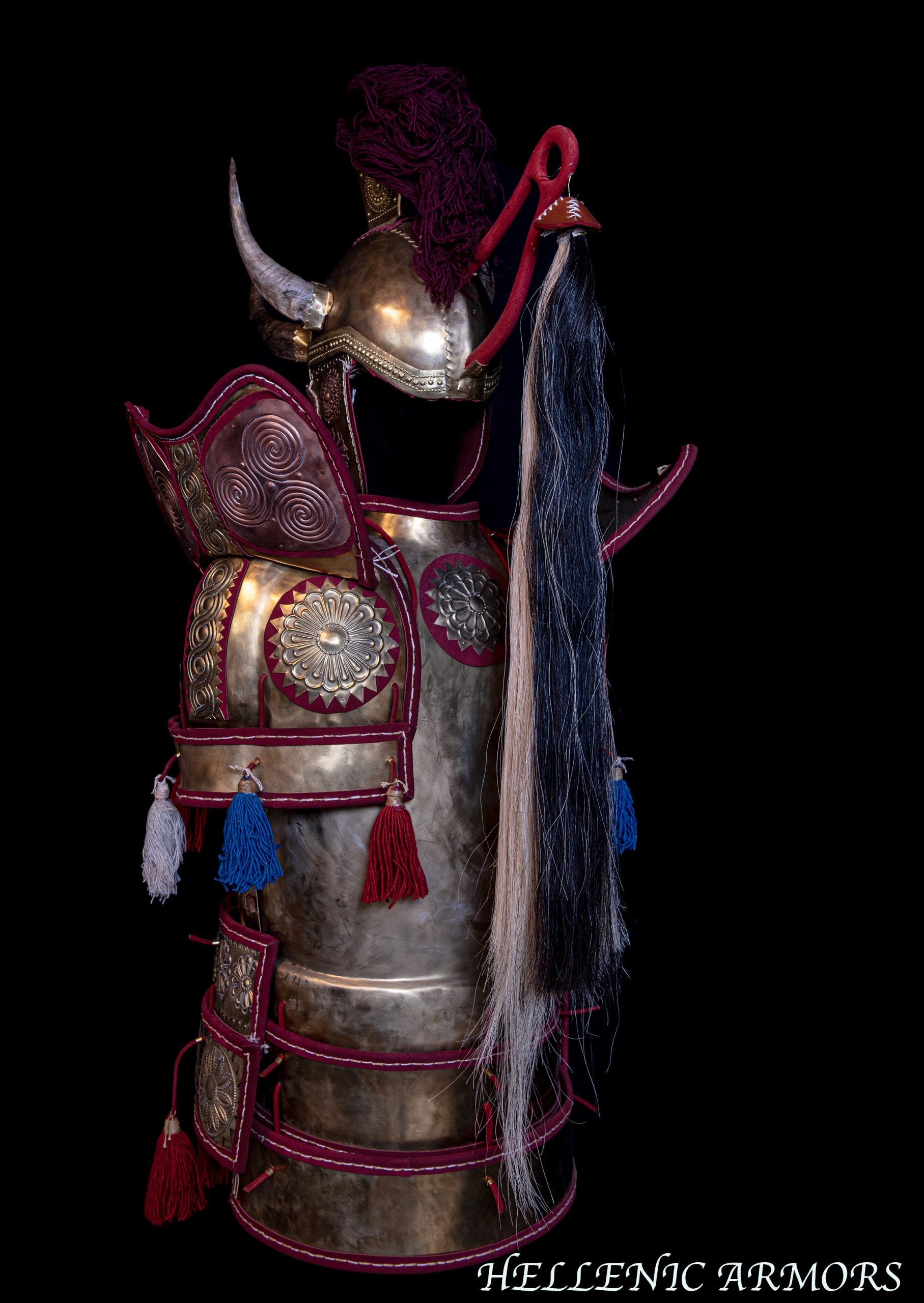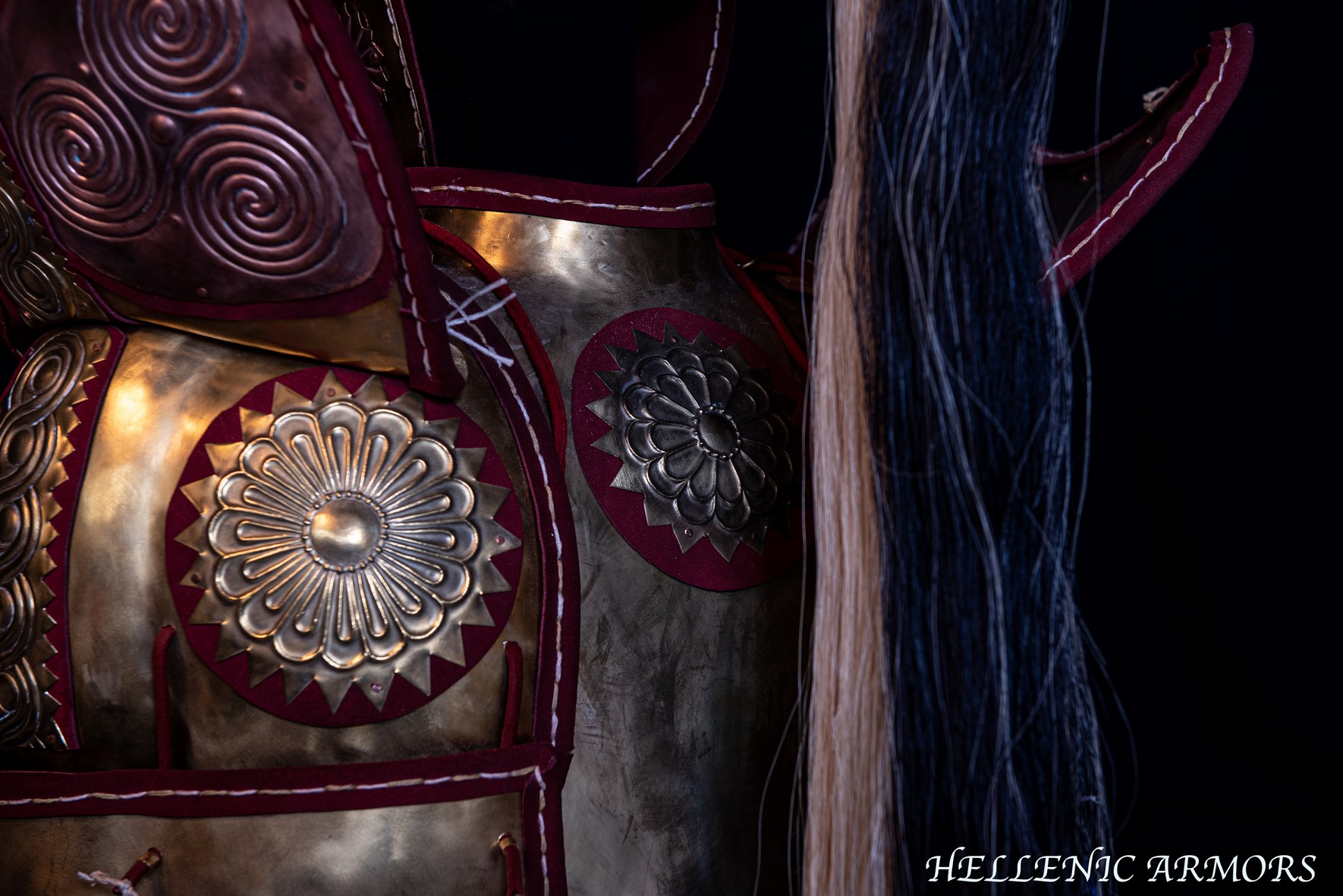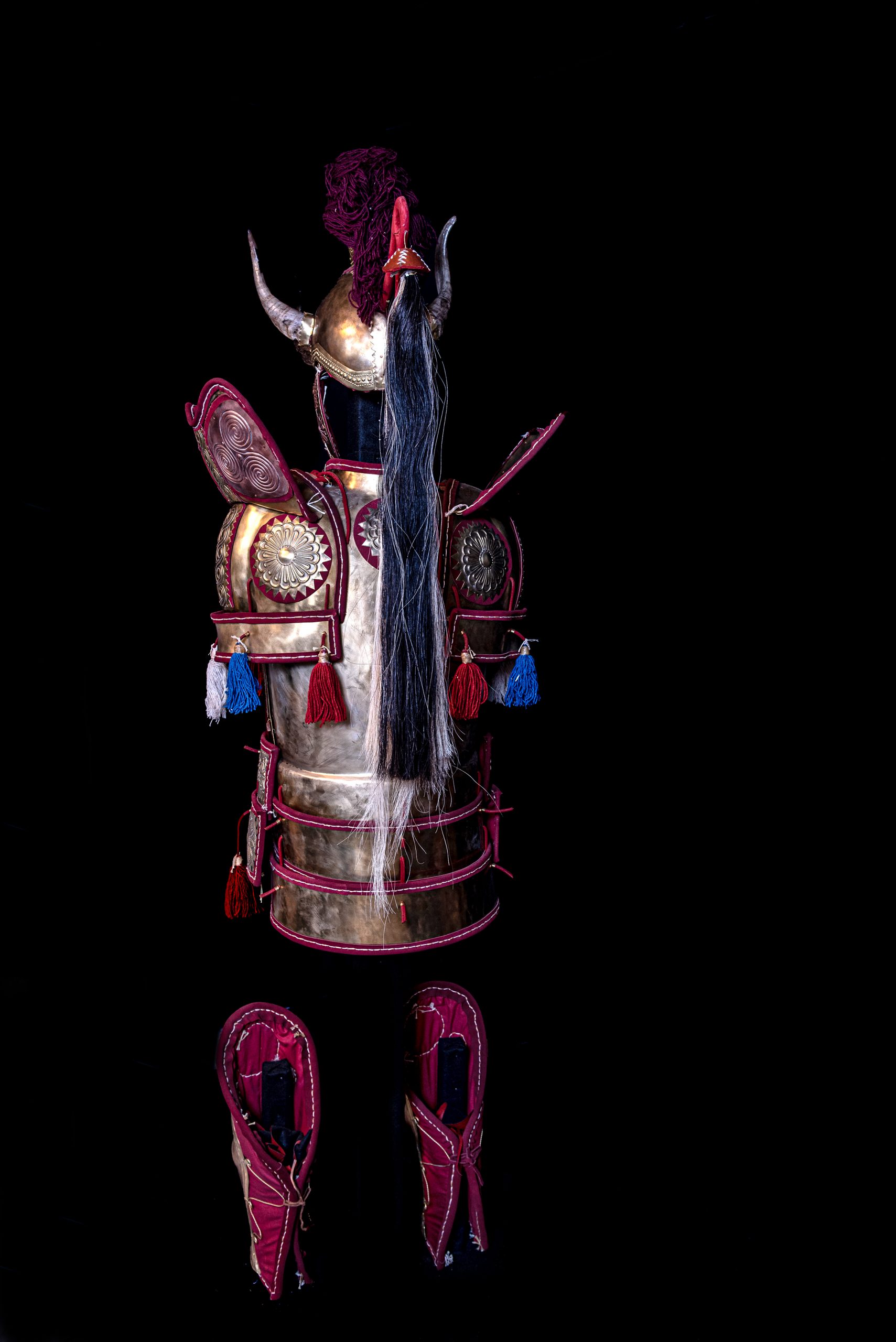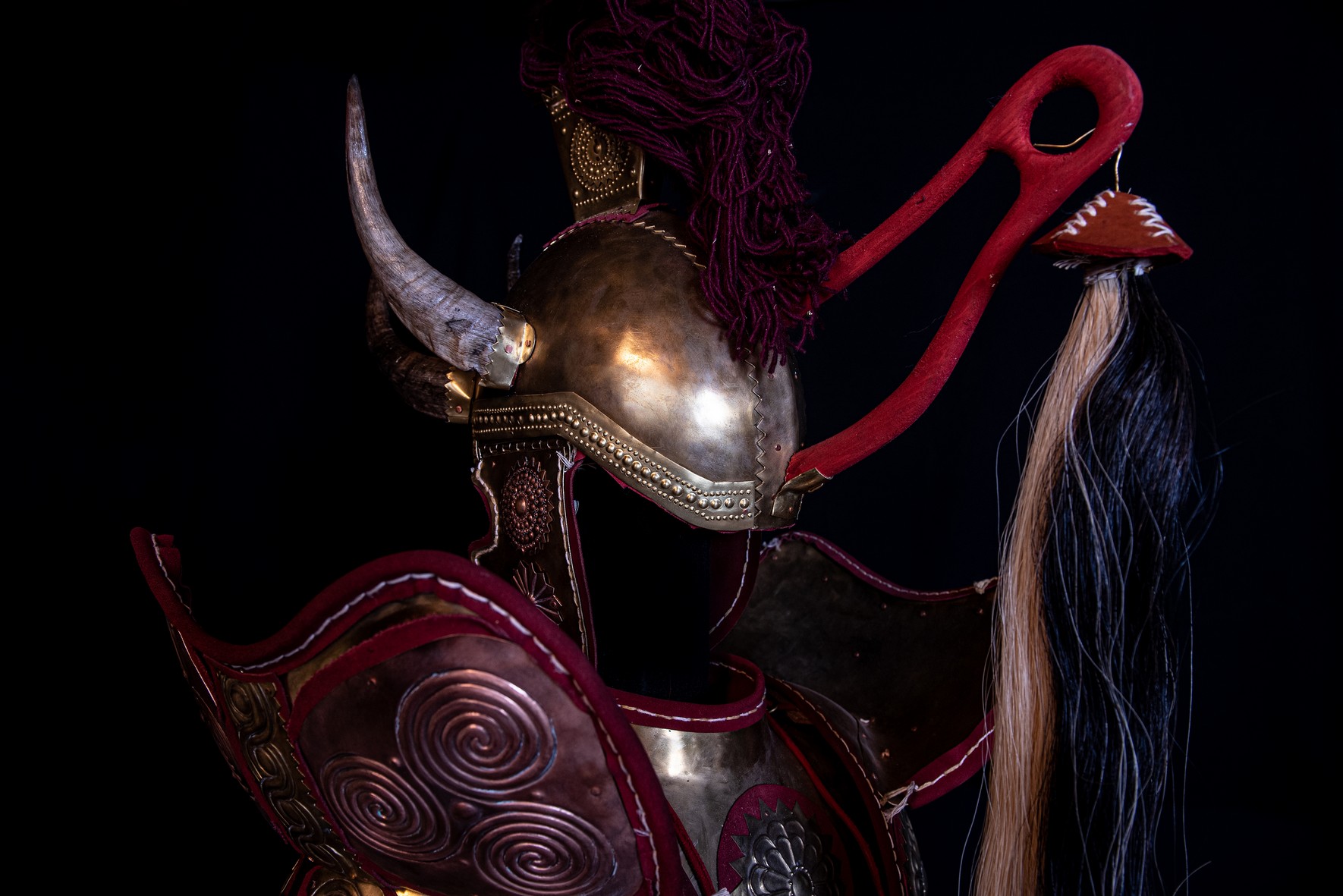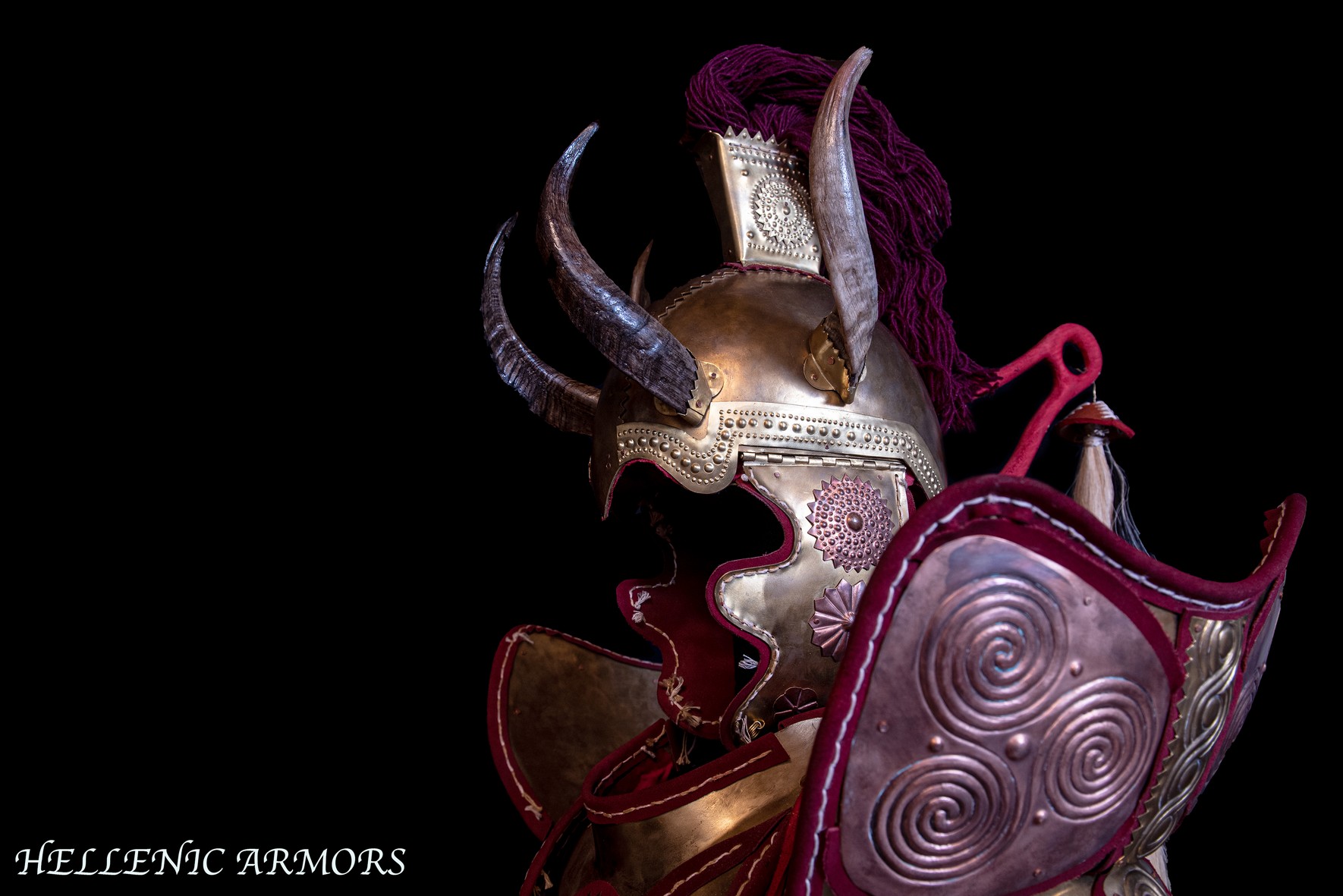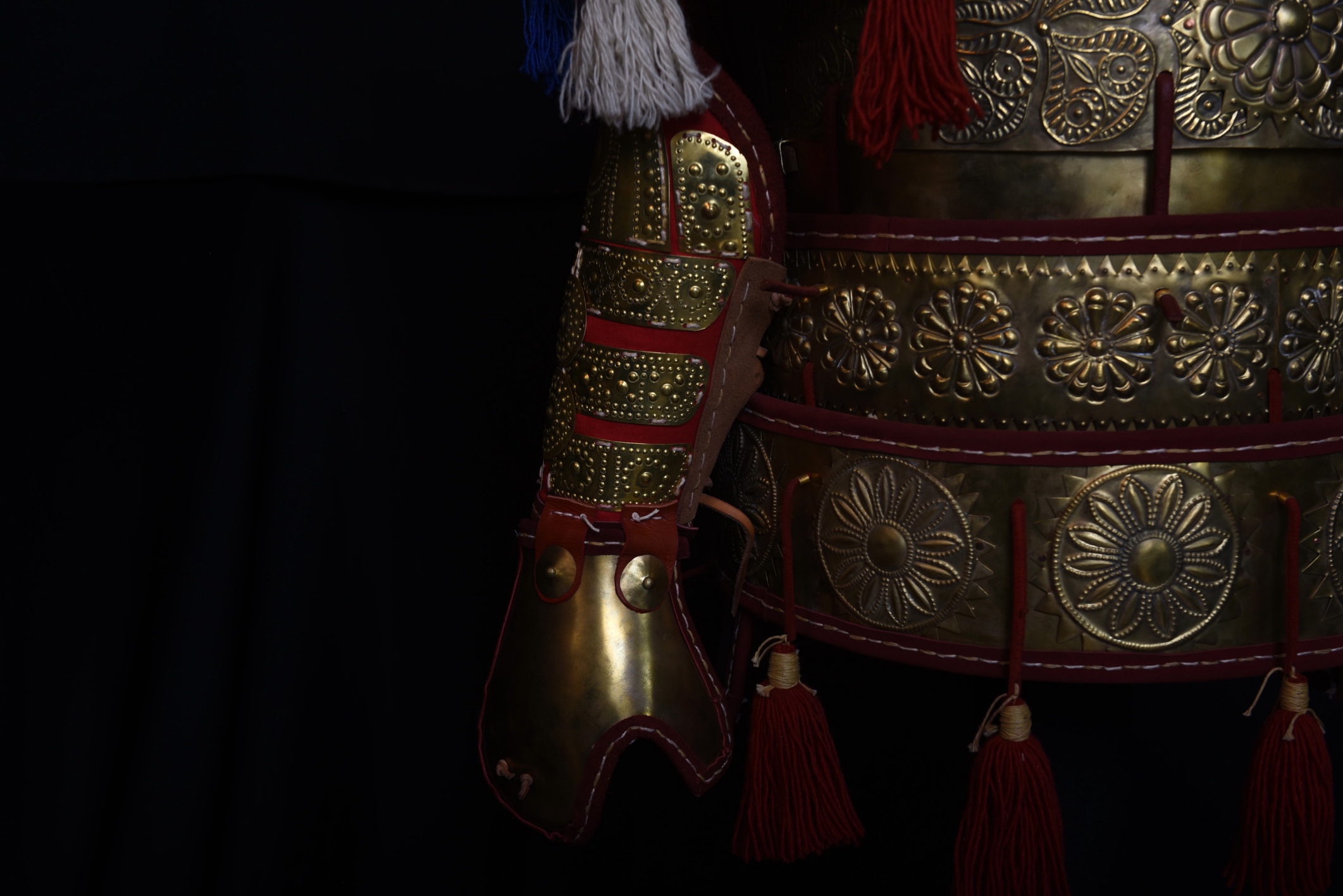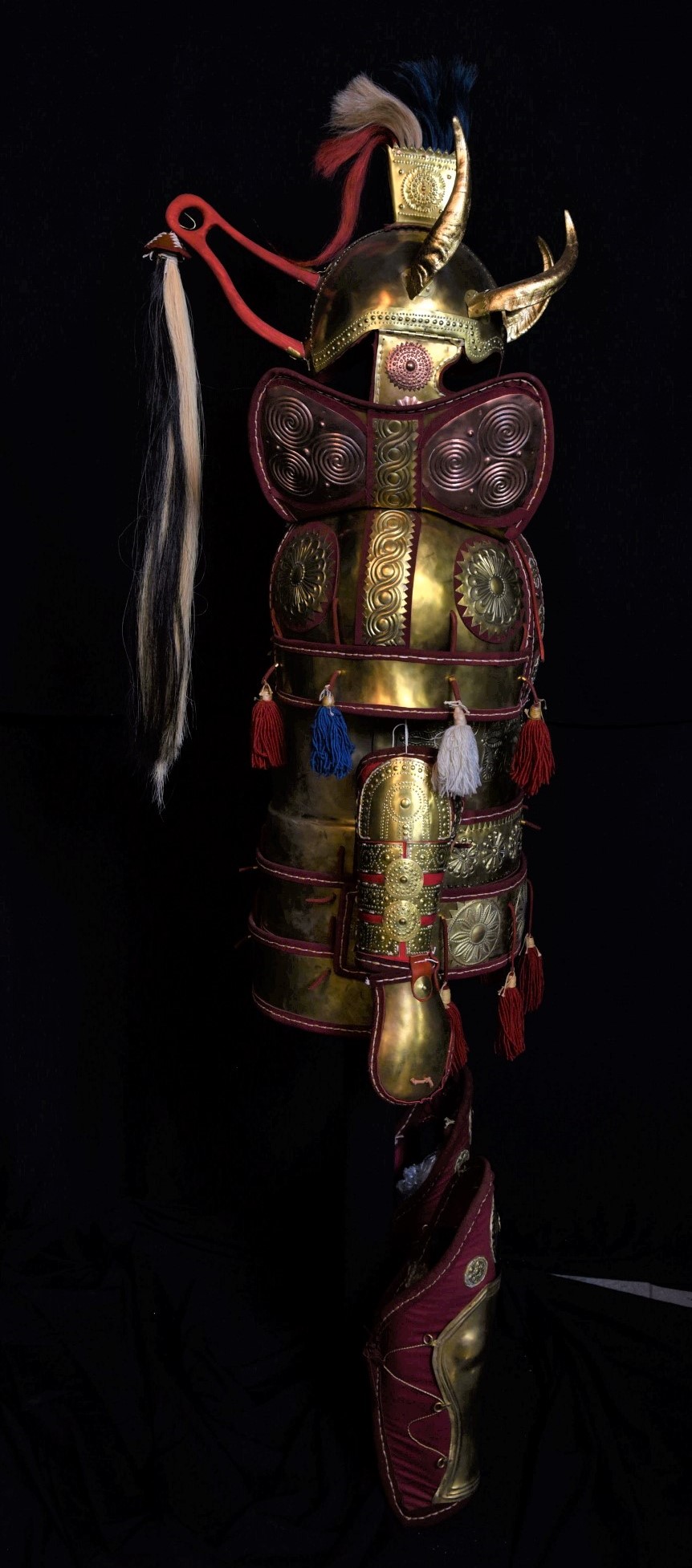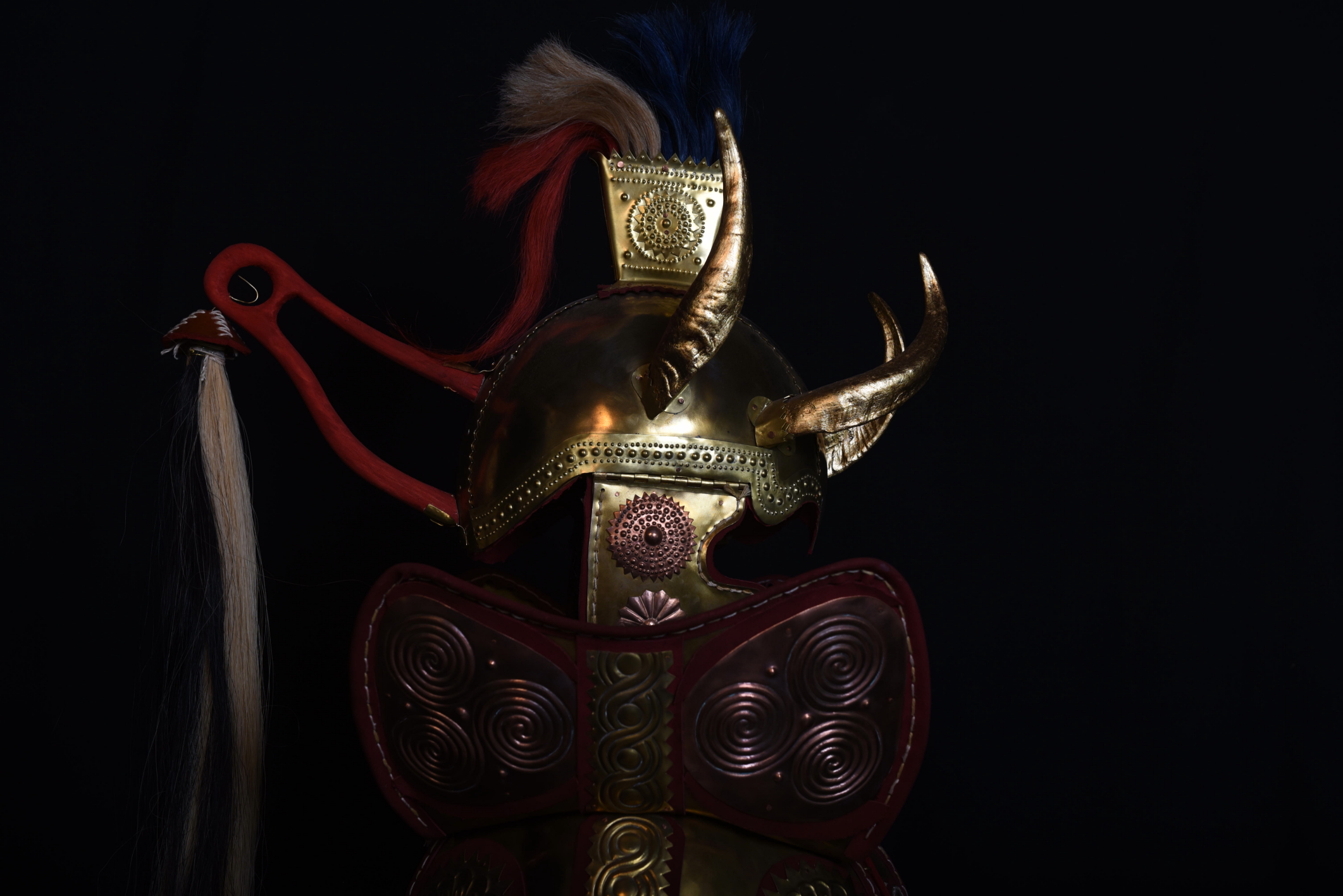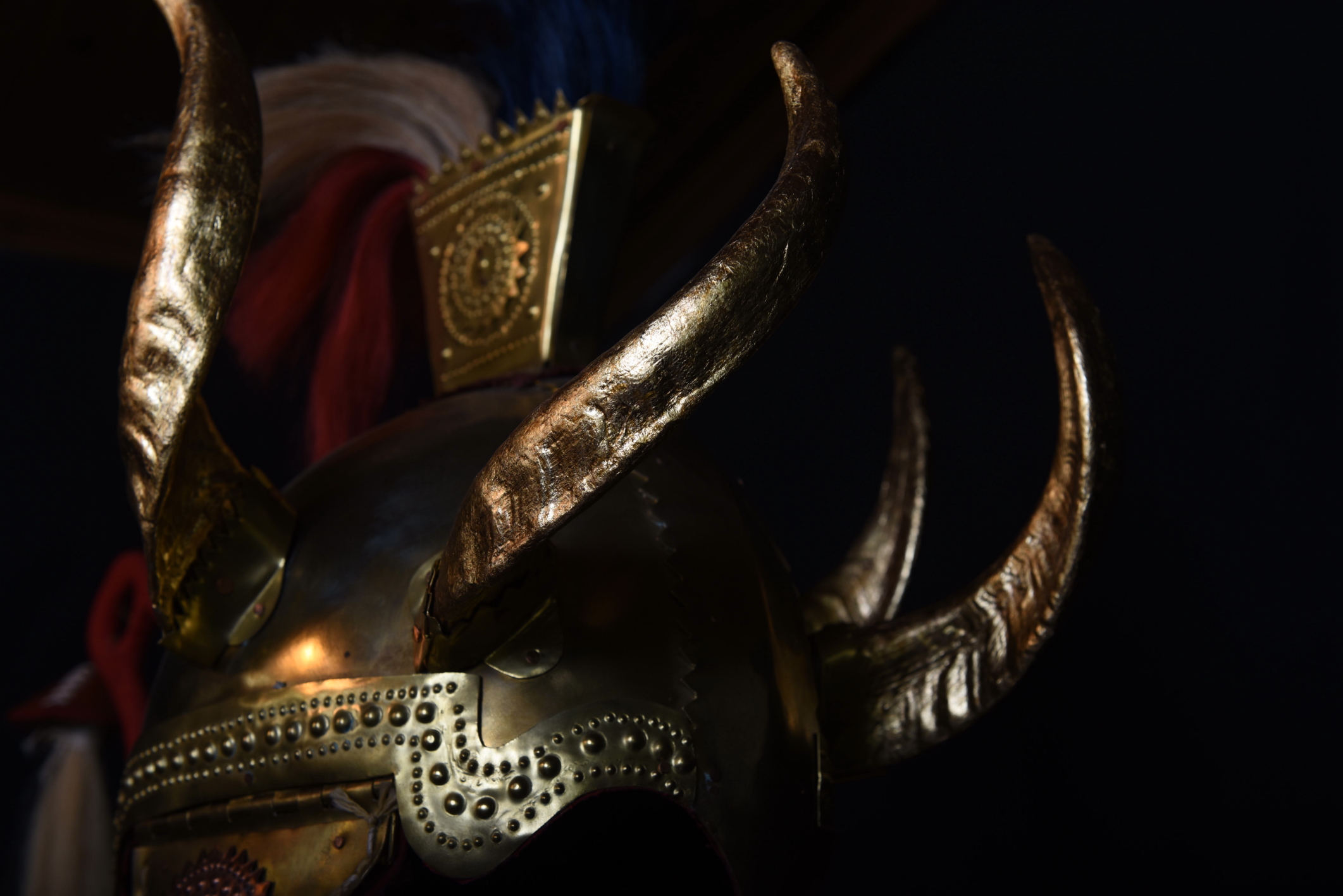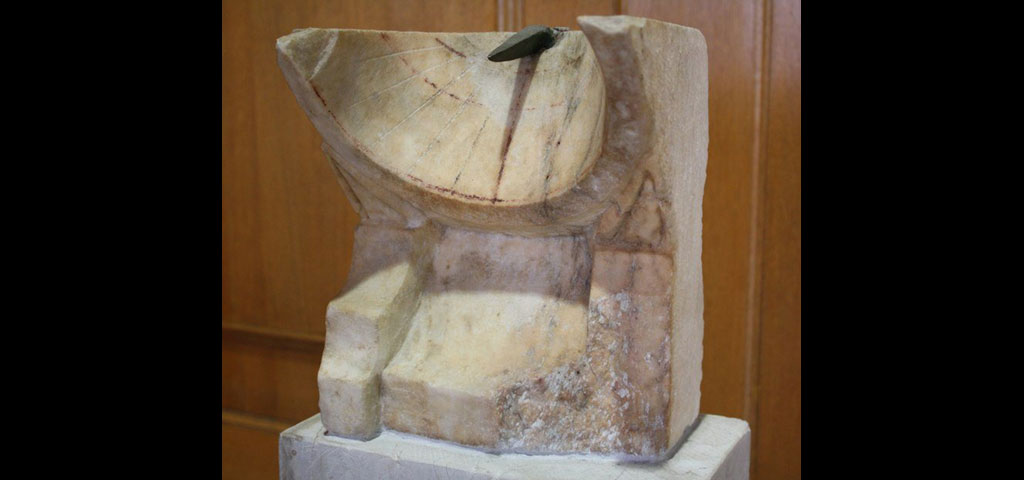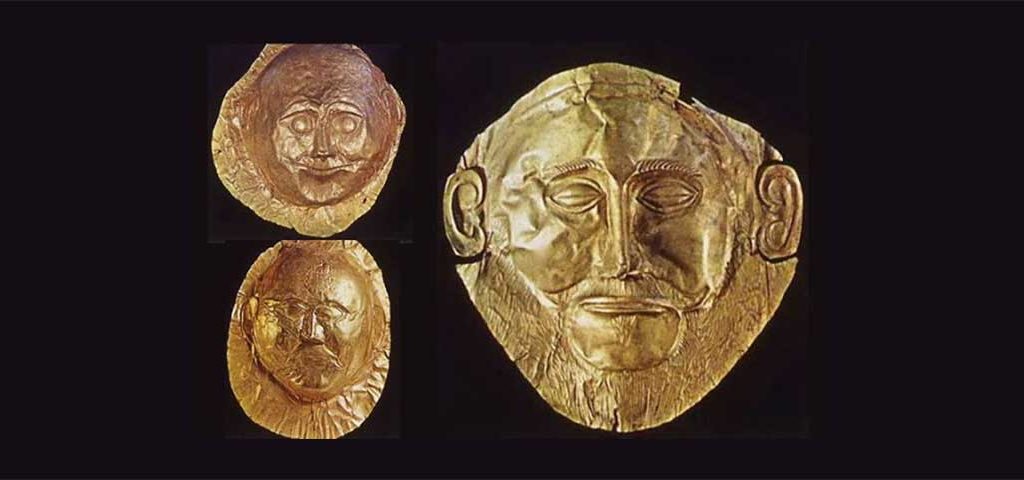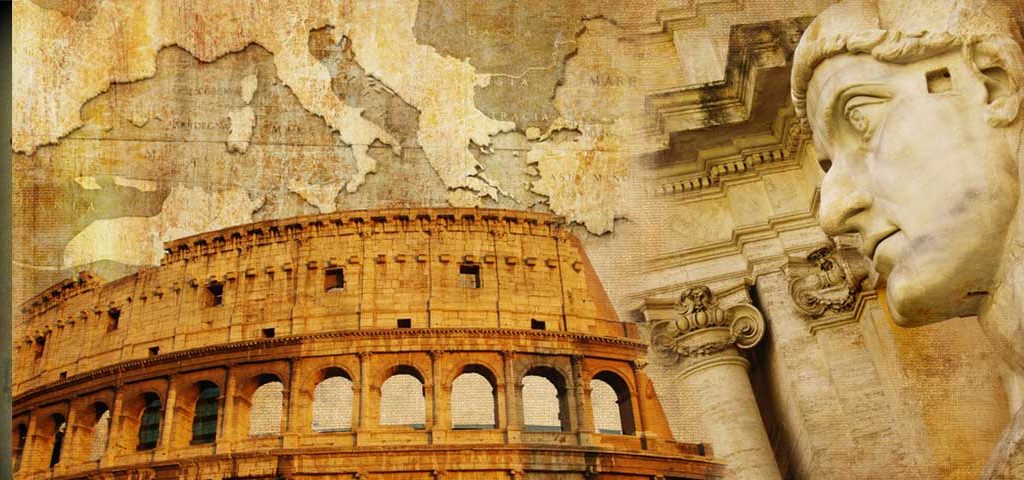Mycenaean Armor
Achilles Thorax (B version)
15th -13th century B.C
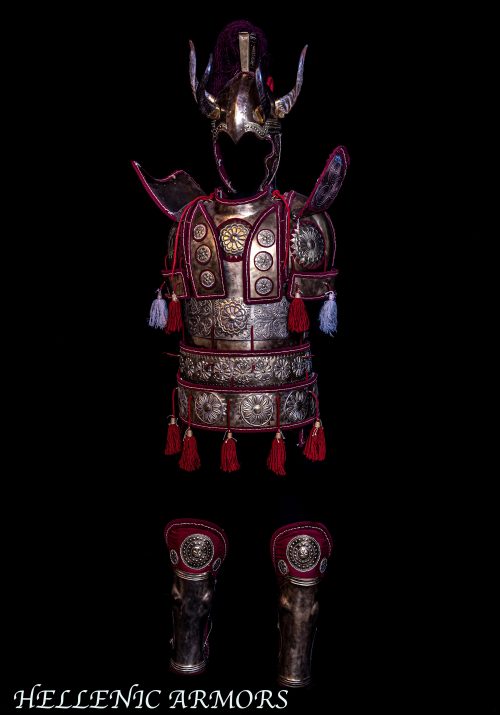
Armor plays an essential role in the Iliad plot. Homer devotes some 470 verses in his description of
Achilles’ brilliant panoply, handcrafted by Hephaestus (Vulcan) – the Greek god of fire and
metallurgy – on order from Achilles’ mother, Thetis. The Trojan War battlefield is replete with
homerian Heroes, direct descendants of powerful gods and goddesses, encased in shinning bronze
armor, fighting each other with extreme ferocity for domination. Deeds of heroism, human drama
and incidents of unspeakable cruelty coexist in a unique synthesis of poetry and philosophy in an
epic which, many years later, was to serve as lore that played a central role in the shaping of the
Western world.
For many centuries thereafter, the appearance of Achilles’ two suits of armor, as they are described
in the Iliad, inspired military leaders, sculptures, painters and writers and, in a broader sense, global
history.
The first description of Achilles’ armor.
τεῦξ᾽ ἄρα οἱ θώρηκα φαεινότερον πυρὸς αὐγῆς,
τεῦξε δέ οἱ κόρυθα βριαρὴν κροτάφοις ἀραρυῖαν
καλὴν δαιδαλέην, ἐπὶ δὲ χρύσεον λόφον ἧκε,
τεῦξε δέ οἱ κνημῖδας ἑανοῦ κασσιτέροιο.
The second set of arms of Achilles, handcrafted by Hephaestus, to meet the specifications set down
by Achilles’ mother, Thetis, for her illustrious son.
φῦσαι δ᾽ ἐν χοάνοισιν ἐείκοσι πᾶσαι ἐφύσων,
παντοίην εὔπρηστον ἀϋτμὴν ἐξανιεῖσαι,
ἄλλοτε μὲν σπεύδοντι παρέμμεναι, ἄλλοτε δ᾽ αὖτε,
ὅππως Ἥφαιστός τ᾽ ἐθέλοι καὶ ἔργον ἄνοιτο.
χαλκὸν δ᾽ ἐν πυρὶ βάλλεν ἀτειρέα κασσίτερόν τε
καὶ χρυσὸν τιμῆντα καὶ ἄργυρον·
His armor would have been more shining than a blazing fire (Iliad. XVIII, 610)
ἄρα οἱ θώρηκα φαεινότερον πυρὸς αὐγῆς…
The synthesis of Achilles’ panoply was based on actual archaeological findings, ancient texts,
iconography, ceramic art, Linear B’ ideograms etc, all directly associated with Bronze Age military
technology which flourished during the ‘Mycenaean Era’ as it is commonly known, or, more
accurately, the Late Helladic period (1600-1050 BC). Natural materials such as linen, leather,
bronze, copper and tusks or horn were all used in its construction while the bronze muscled cuirass
of the torso used exlusively hammering techniques as adopted from Hephaestus himself and his
divine workshop.
The torso and the shoulders guards of the armor ( “To-ra-ke” in Linear B’, Thorax in classical Greek) has been based on the Thebes Armor,a unique archaeological find,currently on display at the Archaelogical Museum in Thebes (Greece). It was found at Thebes Mycenaean citadel inside the arsenal hall and it has dated between 14th-13th century BC.The cuirass consists of two hammered anatomical bronze sheet plates, the front and the dorsal piece allowing large openings for the arms and neck, fastened together with six pairs of Π-shaped locking fasteners (at the armpit and neck). The breastplate hangs a few centimeters lower than the back and bears two star-like copper decorations (probably a heraldic emblem of Achilles’ first panoply, mentioned by Homer) based on artistic examples of this era.
Each of the curved pauldrons (shoulder guards) consisted of three separate pieces and its design is also based on the Thebes Armor and relevant Linear B’ ideograms. They offer sufficient protection at the shoulder and upper arm areas.They have adorned with various rich star like decoration etc. based on existing Mycenaean gold ornaments mainly displayed at the National Archaeological Museum of Athens (Mycenaean antiquities collection).
